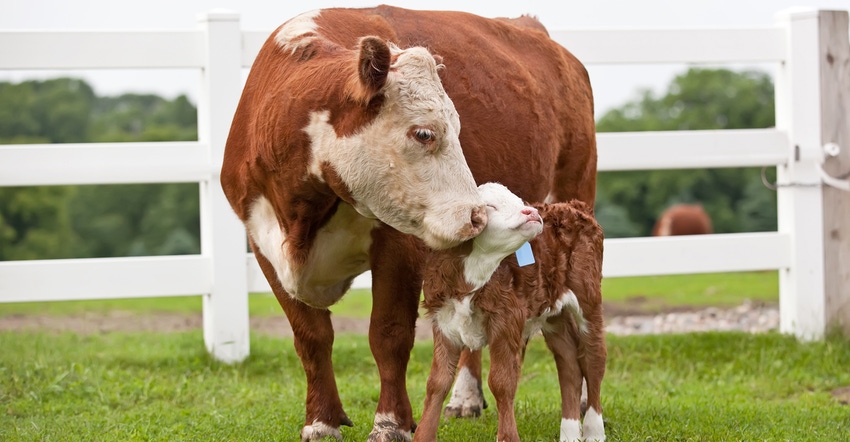October 29, 2018

By John F. Grimes
The fall harvest season is wrapping up, and cattle producers are weighing their options as most of the spring 2017 calf crop has been weaned. Decisions are being made as to whether calves should be sold as feeders, placed in backgrounding enterprises, sent to a feedlot or heifers retained as future herd replacement females.
Many important beef management decisions are made late in the calendar year. Any owner or manager of an operation should have a basic awareness of the overall economic situation and long-term outlook for his or her segment of the beef industry. So where does the beef industry stand today?
Current cattle cycle ending
The current cattle cycle that began earlier this decade is showing signs of coming to a close. The beef industry has experienced an eventful decade that has seen a rapid decline in cow herd numbers, followed by rapid expansion driven by record-high prices in 2014 and 2015. Market prices have moderated more recently in response to increases in the supplies of all classes of beef animals. However, market prices have stabilized to the point of giving producers a reasonable chance of profitability. The U.S. consumer, who is expected to purchase more than 218 pounds of beef, pork and poultry in 2018, has made this possible. Foreign trade is also a key factor in current prices, as the livestock and poultry industries send more than 40 pounds per person to the global marketplace.
Cow-calf producers should realize that feeder calf marketing is undergoing significant changes across the country. The market is currently sending a clear message that buyers are demanding more for their purchasing dollars. Significant discounts are occurring in the market place for feeder calves that are not weaned at 45 to 60 days old, castrated and healed, dehorned, and given two rounds of a modified live vaccine for the shipping fever complex. Exports to China and other countries are going to require age and source verification. These are growing realities for cow-calf producers if they want access to as many markets as possible.
Consider value-added practices
Many producers will question the merits of implementing value-added practices, as they simply believe they do not receive sufficient financial rewards to justify these extra practices. The reality is, producers probably will not be properly compensated if they are selling a small number of calves at any type of traditional sale. Consider working with other producers to put together larger groups of calves of similar breed composition, weight and sex.
Traditionally, replacement heifers are selected from the current calf crop to be developed, bred and added to the herd. By anyone’s standards, raising replacement heifers is a long-term proposition. To properly develop replacement heifers, there must be a strong commitment to providing sound management and adequate facilities to get the job done correctly. The average cow herd in Ohio numbers less than 20 cows. Given a normal replacement rate of 15% to 20%, this would result in keeping back three to four heifers annually as replacements. This often results in poorly developed heifers unless they are managed as separate production group.
Regardless, whether producers raise their own replacements or purchase them, establish selection criteria based on the particular needs of the herd. Traits of importance will include fertility, calving ease, growth rate, structural correctness, milk production, disposition, fleshing ability, muscling and frame size. I would contend that fertility and calving ease should be at the top of every producer’s selection criteria list. A cow must become bred and calve every 12 months to cover her expenses and, hopefully, make a profit. A calf cannot be sold at market unless a live, healthy calf is delivered at birth.
If producers select replacements from their own herd, a few basic criteria should be followed. Select heifers that were born in the first 30 to 45 days of the calving season. Retain daughters of your most productive cows. Avoid extremes in terms of birth weight and frame size. Use individual performance data, expected progeny difference and selection indexes, and DNA tests to identify superior individuals. Disposition must also be a consideration. Also, producers should retain more heifer calves than their replacement goal to allow for less-than-perfect conception rates as yearling heifers.
Pluses to raising own replacement females
There are several advantages to raising your own replacement females, including having more control of genetics prioritized in the herd and their ability to adapt to given environment. With his or her own replacements, the breeder has a better perspective of a replacement heifer’s background for more accurate evaluation, and home-raised heifers can provide increased biosecurity for disease control. It also may cost less to raise them than to purchase replacements.
There are also advantages to buying replacement heifers. Purchasing replacements can give more flexibility to use farm resources for other purposes. It also facilitates more rapid herd expansion and change in the breeding program, the producer can source replacements with improved genetics, and it may cost less to buy than to raise replacements.
Today’s cattle producers will surely face many challenges in the next cattle cycle to remain economically viable in the beef industry. Conducting “business as usual” may not be the best path to success.
Grimes is an OSU Extension beef coordinator.
You May Also Like




